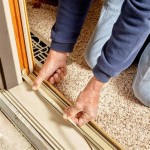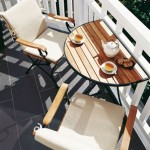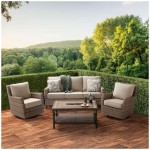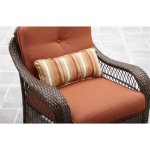Replacement Seat Cushions for Patio Furniture: A Comprehensive Guide
Patio furniture provides a comfortable and inviting space for outdoor relaxation and entertainment. However, over time, the cushions that accompany this furniture can become worn, faded, or damaged, detracting from both the aesthetic appeal and the overall comfort. Replacement seat cushions offer a practical and cost-effective solution to revitalizing outdoor furniture, extending its lifespan, and enhancing the outdoor living experience. This article explores the various aspects of replacement seat cushions for patio furniture, offering insight into the selection, materials, maintenance, and benefits associated with this upgrade.
Understanding the Need for Replacement Cushions
The outdoor environment places significant stress on patio furniture cushions. Exposure to sunlight, rain, wind, and temperature fluctuations contribute to the deterioration of both the fabric and the internal filling. Ultraviolet (UV) radiation from the sun can cause fabrics to fade, weaken, and become brittle. Moisture can lead to mold and mildew growth, especially if the cushions are not adequately protected or allowed to dry properly. Furthermore, repeated use compresses the filling, reducing the cushion's support and comfort. Ultimately, these factors necessitate the replacement of seat cushions to maintain the functionality and aesthetic value of patio furniture.
Furthermore, the style preferences of homeowners often evolve. Replacing cushions provides an opportunity to update the look of existing furniture without the need for purchasing entirely new sets. A change in color, pattern, or fabric can dramatically alter the overall ambiance of the outdoor space, allowing for personalized design and seasonal updates. Replacement cushions can also address specific comfort needs. Individuals may prefer a firmer or softer cushion, or a cushion with different dimensions to better suit their seating preferences.
The cost efficiency of replacing cushions compared to buying new furniture is another compelling reason to consider this option. High-quality patio furniture can be a significant investment. Replacing only the cushions allows homeowners to preserve their existing furniture frames, which often remain structurally sound for many years. This approach represents a considerable cost savings while still achieving a refreshed and comfortable outdoor living space.
Selecting the Right Replacement Cushions
The process of selecting replacement seat cushions for patio furniture involves several key considerations. Careful attention to these factors ensures a proper fit, optimal performance, and long-term satisfaction.
Measurements: Accurate measurements are paramount. Measure the existing cushions precisely, noting the length, width, and thickness. Consider the shape of the cushion, as some cushions have curved edges or unique contours. If the original cushions are no longer available, measure the seating area of the furniture itself, taking into account any curves or angles. It is generally recommended to err on the side of slightly larger measurements rather than smaller, as a slightly oversized cushion is preferable to one that is too small.
Fabric Choice: The fabric used for replacement cushions significantly impacts their durability, comfort, and aesthetic appeal. Outdoor fabrics are specifically designed to withstand the rigors of the outdoor environment. Solution-dyed acrylic fabrics, such as Sunbrella, are highly resistant to fading, staining, and mildew. These fabrics are also easy to clean and maintain. Polyester fabrics are another popular choice, offering good UV resistance and water repellency at a more affordable price point. Olefin fabrics are known for their stain resistance and durability, making them suitable for high-traffic areas. The selection of a fabric's color and pattern should complement the existing furniture frame and the overall outdoor décor. Consider the level of sun exposure the cushions will receive and choose darker colors with caution, as they tend to absorb more heat.
Filling Material: The filling material determines the cushion's comfort and support. Polyurethane foam is a common and affordable option, but it can degrade over time, becoming compressed and losing its shape. High-density foam offers greater durability and support, maintaining its form for a longer period. Polyester fiberfill is a softer and less expensive alternative to foam, but it tends to flatten more quickly with use. A combination of foam and fiberfill can provide a balance of comfort and support. For cushions that will be exposed to frequent moisture, consider using a filling material that is specifically designed to resist water absorption, such as quick-drying foam or a waterproof liner.
Construction and Style: The construction of the cushion impacts its durability and appearance. Look for cushions with reinforced seams and sturdy zippers. Welt cords, which are decorative trim around the edges of the cushion, add a tailored look and enhance the cushion's shape. Boxed cushions, which have straight sides, provide a more formal appearance, while knife-edge cushions, which have rounded edges, offer a more relaxed look. Consider the style of the furniture and choose cushions that complement its design. Some cushions feature ties or Velcro straps to secure them to the furniture frame, preventing them from sliding or blowing away in the wind.
Customization Options: Many manufacturers offer customization options for replacement seat cushions. This allows homeowners to create cushions that perfectly match their specific needs and preferences. Customization options may include selecting the fabric, filling material, dimensions, and style. This is particularly beneficial for furniture with unusual shapes or sizes, ensuring a perfect fit and a cohesive look.
Maintaining and Protecting Replacement Cushions
Proper maintenance and protection are essential for extending the lifespan of replacement seat cushions and preserving their appearance. Regular cleaning, proper storage, and the use of protective covers can significantly reduce the impact of environmental factors and prolong the cushion's usability.
Regular Cleaning: Cleaning cushions regularly prevents dirt, dust, and mildew from accumulating. Most outdoor fabrics can be cleaned with mild soap and water. Use a soft brush or sponge to gently scrub the fabric, then rinse thoroughly with clean water. For more stubborn stains, consider using a fabric-specific cleaner or a diluted bleach solution (always test in an inconspicuous area first). Allow the cushions to air dry completely before storing them or placing them back on the furniture. Avoid using harsh chemicals or abrasive cleaners, as these can damage the fabric.
Waterproofing and Stain Protection: Applying a fabric protector can help to repel water and stains, making the cushions easier to clean and preventing moisture from penetrating the filling. Fabric protectors are available in spray-on formulas and can be applied after cleaning the cushions. Reapply the fabric protector periodically, especially after heavy rain or washing the cushions.
Proper Storage: When not in use, store the cushions in a dry, well-ventilated area. If possible, store them indoors during the off-season to protect them from extreme weather conditions. If indoor storage is not available, use waterproof covers to protect the cushions from rain, snow, and sun. Ensure that the cushions are completely dry before storing them to prevent mold and mildew growth. Consider using a dehumidifier in the storage area to further reduce the risk of moisture damage.
Protective Covers: Using protective covers is an effective way to shield the cushions from the elements and extend their lifespan. Covers are available in a variety of materials, including waterproof polyester and vinyl-coated fabrics. Choose covers that are specifically designed for outdoor use and that fit the cushions snugly. Secure the covers with straps or ties to prevent them from blowing away in the wind. Regularly clean the covers to remove dirt and debris.
Addressing Mildew and Mold: If mildew or mold develops on the cushions, it is important to address it promptly to prevent further damage. Clean the affected areas with a solution of bleach and water (follow the manufacturer's instructions for the specific fabric). Use a soft brush to scrub the affected areas, then rinse thoroughly with clean water. Allow the cushions to dry completely in the sun. In severe cases of mildew or mold, it may be necessary to replace the cushions.
By implementing these maintenance and protection strategies, homeowners can ensure that their replacement seat cushions remain in good condition for many years, providing comfortable and aesthetically pleasing outdoor seating.
In conclusion, selecting and maintaining replacement seat cushions for patio furniture is a worthwhile investment that enhances the comfort, aesthetic appeal, and longevity of outdoor living spaces. By carefully considering the factors outlined above, individuals can make informed decisions and enjoy a refreshed and inviting outdoor environment.

Replacement Chair Cushion Indoors Outdoors Popular Size

Water Resistant Rattan Patio Furniture Sofa Replacement Cushion Seat Or Back Pad Ebay

Sunbrella Outdoor Replacement Seat Cushions The Company Store

Sunbrella Replacement Cushions Recommended

Indoor Outdoor Belair Replacement Chair Rocker Cushion Large

Rolston 2pc Outdoor Replacement Chair Cushion Set Beige Brown Haven Way Walmart Com

Sunbrella Replacement Outdoor Seat Cushion The Company Store

Waterproof Outdoor Indoor Furniture Cushions Replacement Deep Seat Cushion For Patio Chair Wish

Artplan Seat Back Outdoor Chair Cushion Patio Tie Tufted Replacement For Furniture 20 In X20 X4 Set Of 4 Yzb0409 The Home

Sunbrella Replacement Outdoor Seat Cushion The Company Store
See Also








